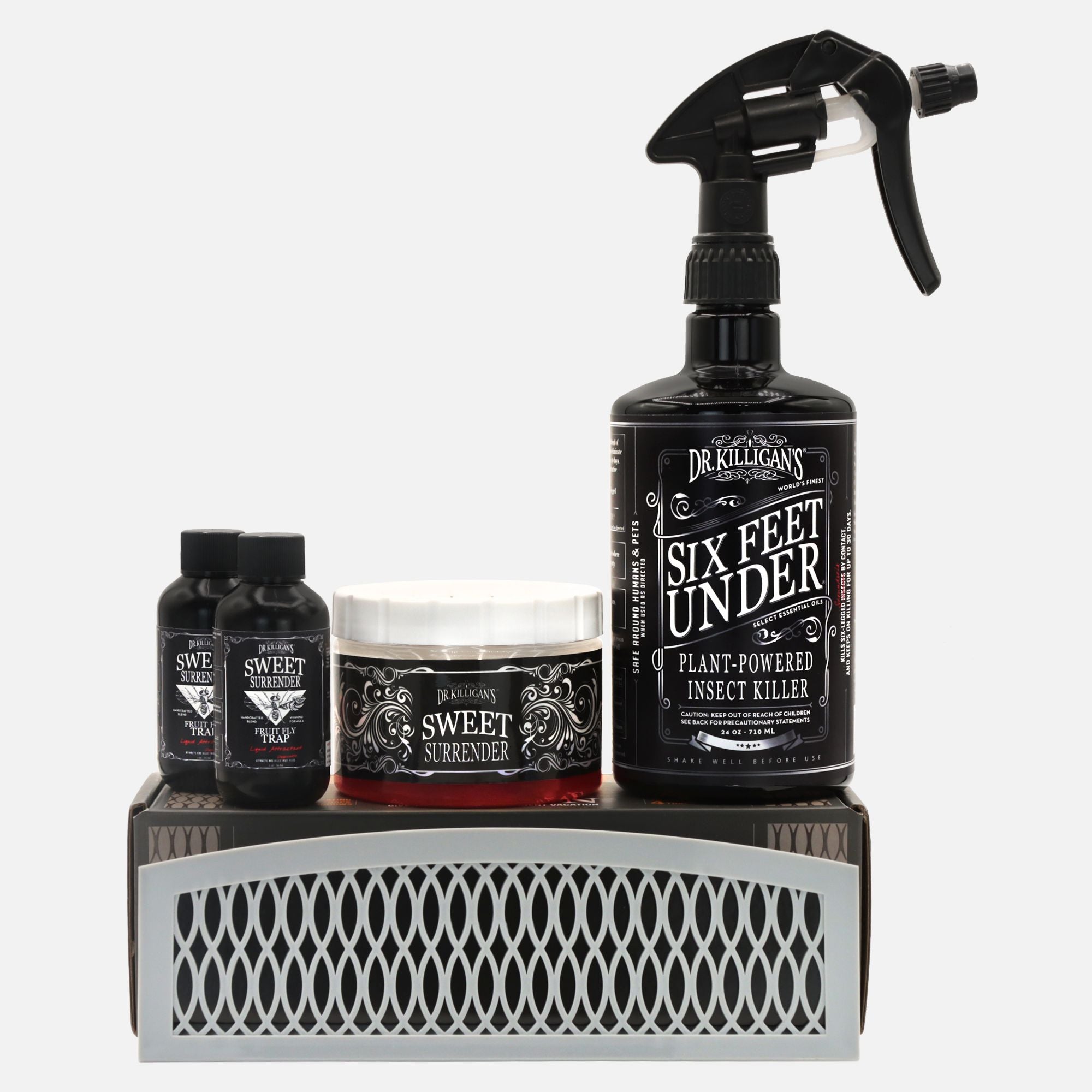I’m not sure what gross looks like to you, but I label gross as the sludge in the bottom of a trash can. I also see aphids as gross. They’re small, fat, juicy, and can be just about any color—pink, white, gray, light green, black…
These ridiculously small pear-shaped insects, measuring less than ⅛ of an inch (which is the same as a quarter turned on its side), with tiny compound eyes and sucking mouthparts, are from the insect family Aphididae. What’s interesting to note is that, in times of overpopulation or crowding, a mama aphid can simply produce offspring with wings so that her now-winged babies can fly to and colonize less crowded, healthier plants. Isn’t that lovely?
The best way to identify aphids is to look for two tail pipes or little horns, which are known as cornicles, found at the end of their abdomen. All aphids have cornicles. These little-horned plant-eaters will be found, in clumps, on tender new growth and on the undersides of leaves, sucking the life out of your house plants. They’ll also congregate on the stems or roots of plants. The plant juices they drink, oddly enough, have more sugar than protein, meaning that they have to slurp astronomical proportions to get sufficient protein.
How do aphids damage plants?

There are four main ways in which these tiny plant lice, which are one of the most destructive pests for cultivated plants, affect your house plants.
Reduction in nutrients
How can a plant sprout and prosper when someone (or some insect) is literally sucking the life out of it? It can’t. The results—stunted growth, diminished leaf production, and a withering death. If it doesn’t die, it’ll resemble a lonesome malnourished stick in a clump of brown earth.
Transmission of plant disease
Within seconds, some aphids can transmit dozens of viruses. As they stick their tiny mouthparts into your beautiful flourishing house plants in search of sap, they’re also potentially sticking diseases into these plants. The main issue with this: There is no remedy. Either a plant is healthy and resistant to the viruses and continues to grow well or is unhealthy, weak, and isn’t resistant to the viruses and eventually dies. Either way, it’s likely that the crop yield will suffer.
Development of sooty mold
Sooty mold, a fungal disease, is named for the dark threadlike growth of the fungi that resembles a layer of soot. It doesn’t infect plants, but grows on plants where honeydew deposits, or sticky substances created by insects (in this case aphids), accumulate. If you find this black mold on your beloved plants, consider them a loss. Let’s not spread the mold.
Introduction of salivary toxins
If the leaves of your once lush, vibrant plants have gone yellow or see that they have curled back upon themselves, in an act of self-protection, then your plant has been affected by toxins.
How do I protect my plants from aphids?
Prevention is key, as once your plant has been affected by a mob of aphids, it’s most likely time to let go of that plant, giving it over to the hungry, winged and non-winged invaders, and move on.
For aphid prevention, I recommend two products: Dr. Killigan’s Insect Buster and Dr. Killigan's Dust to Dust Non-Toxic Insect Powder.

Dr. Killigan’s Insect Buster is an effective tool for dispersing Dust to Dust or other non-toxic insecticides like diatomaceous earth. It’s easy-to-use and includes a filling funnel and a steel ball, which will prevent the powder from clumping.
Dust to Dust is a great non-toxic, non-poisonous insecticide for aphids and can be safely used around your children and your pets. It has proven kill times of up to 50% faster than diatomaceous earth.
Start by gently spraying a thin layer of Dust to Dust on the soil around your affected plants. Then dust the plants with Dust to Dust. As aphids prefer the undersides of leaves, make sure that you turn these up when spraying the powder. Dr. Killigan’s Insect Buster will allow you to apply puffs of Dust to Dust onto the plant at any angle.
Be mindful to not get any of the dust into your eyes or nose. You may want to consider wearing googles or a face mask.
While Dr. Killigan’s Insect Buster can be used to kill aphids that are already on your plants, prevention is key. Remember that aphids will target plants that are beginning to look sickly, so keep your plants healthy by giving them the nourishment (both water and fertilizer) and sunshine that they need.




















